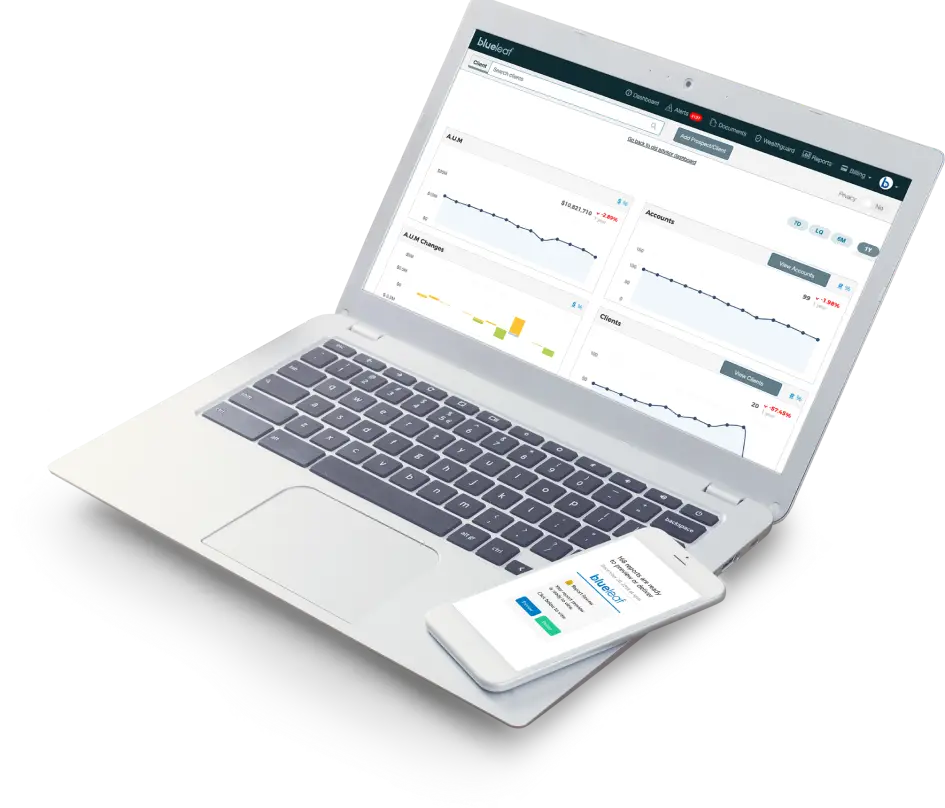Last Updated on April 28, 2021 by Carlo Navarro
“When I let go of what I am, I become what I might be.” -Lao Tzu
Change, in and of itself, is not difficult. One simply needs to embrace it. Resistance to change can stall the evolutionary process, but it won’t stop it. This is prevalent in life and an immutable truth in business. When circumstances demand it, those who don’t change will fail.
As 2020 comes to a close, we’re all a bit nostalgic over days gone by. The way that we once did business is no longer working. Going forward, wealth managers can mourn the passing of “how it used to be,” or rejoice in the limitless possibilities now in front of us.
Cataclysmic events are always followed by periods of growth and renewal.
The digital-first mindset forced upon us during the Covid-19 pandemic was a necessary evolutionary step in financial services. It’s just the beginning. There’s more change coming in 2021.
Clients are no longer looking to book office appointments. They are seeking the convenience of online video communication and remote client service. Adapting to this “new normal” is the first step in adjusting to what will be the status quo in wealth management going forward.
The Digital Realm has No Borders or Boundaries
Free your mind. The Morpheus quote from “The Matrix” says it all. There are no borders or boundaries in the digital realm. Wealth managers don’t have to limit themselves to a specific geographical area. Virtual advising is national, even international if you choose.
This shift in mindset will have an effect on how clients think about wealth management. Your prospect pool will expand, but each prospective client will also have more advisors to choose from. Differentiation strategies and lead capture techniques will need to be addressed.
From a marketing perspective, content with long-tail geographical keywords is about to become obsolete. Google Maps is okay, because there will always be some local traffic, but marketing campaigns that target physical areas or regions will not be as effective.
Offering remote-first financial services in the digital realm removes obstacles that prevent growth. Borders are one of those. Clients won’t have to travel. Meetings will be shorter because they’re online. Advisors will have more bandwidth to take on new clients.
Digital-First Makes True Niche Marketing Possible
A specific niche inside of an already limited geographical space is a small pond to fish in. Expand the space nationally and that niche grows exponentially. That’s when true niche marketing becomes possible. It’s also necessary to differentiate from your competitors.
This is where real change is happening.
Wealth managers who once vied for control over municipalities are now looking to own digital niche markets.
Professional athletes, airline pilots, college professors, and countless others have been deluged with targeted advisor marketing.
The numbers are staggering, but getting the word out is only one half of the equation. When you become a virtual advisor, you can expect a significant influx of new business, simply because of the size of the prospect pool. Can you effectively manage a larger client base?
With the right technology, anything is possible. There are apps to help financial advisors onboard new clients. Video tutorials can explain to clients what they need to do. Automated communication platforms can provide them regular updates.
Once your tech stack is configured to handle it, select a niche, and set up a landing page for it on your website. Launch and then regularly modify a marketing campaign until you start to see good results, then do the same thing for another niche. The possibilities are limitless.
Virtual Advisors are More Efficient
There’s a common misconception that virtual client service is somehow second-tier compared to a more personal approach. We here at Blueleaf know this is a fallacy. Our team has been doing remote service for a decade and our clients regularly give us great reviews.
The virtual model is simply more efficient. Video calls can be scheduled on short notice. Emails facilitate immediacy in communication. Reporting can be automated and done via dashboards and client portals, eliminating the need for manual compilation.
Technology is the key element in all of this. Beware of the franken-product! Software that integrates with other software is a good thing. All-in-ones are not. Take a look back at our recent post on Digital Disorientation for more on how back-end systems can cause front-end operational nightmares.
Using a calendar app to communicate availability and allow for the booking of video calls is an efficient way to manage your time. Most virtual advisors set aside specific blocks of time during the week when they’ll do client calls, leaving other hours for prospecting and trading.
The formula used to calculate work efficiency is output/input. When marketing, client onboarding, and communication can be automated, the “input” number is reduced, while the “output” number increases dramatically. That makes virtual advisors more efficient.
Look for more content on this in the upcoming weeks as we enter the new year. We’ve also written an eBook on remote advising called “Remote First.” Check it out and please feel free to contact us if you have questions or need assistance going virtual.

Ready to learn more about Blueleaf?



